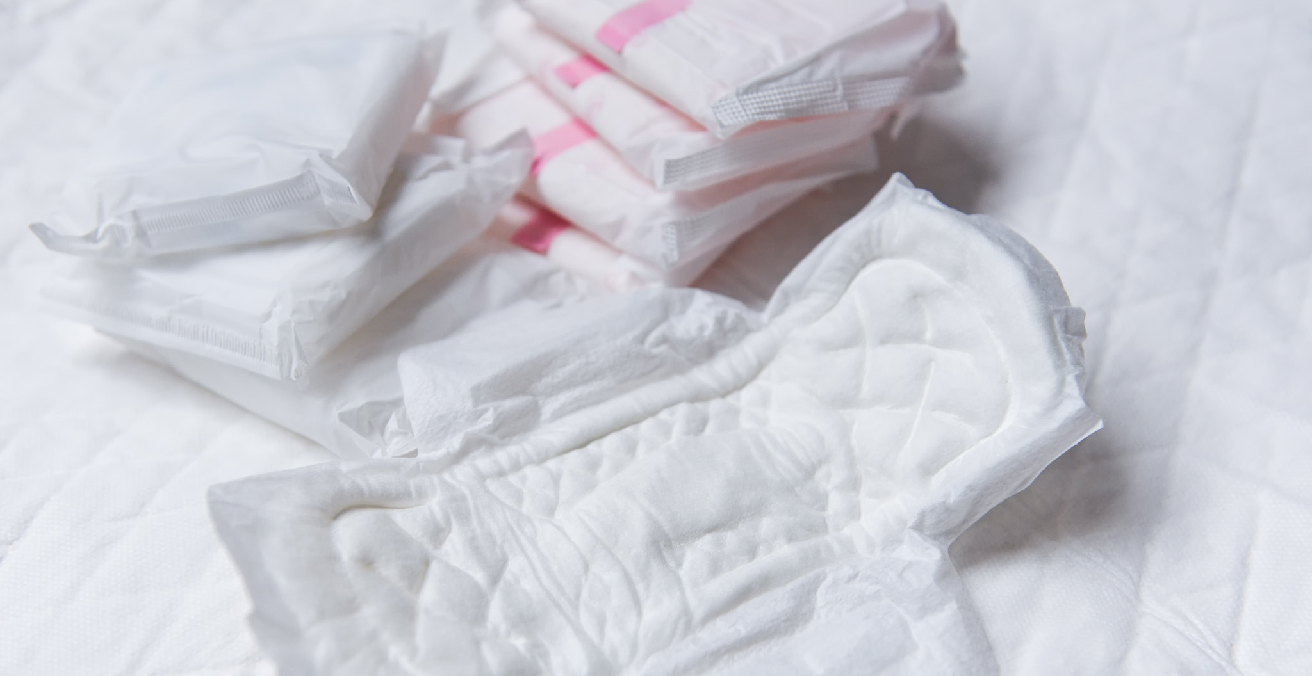Achieving Menstrual Health For All: Are Free Pads the Answer?

Menstruation matters in the lives of billions of people around the world who deserve thoughtful and effective support. How can efforts to tackle “period poverty” rise to the challenge?
Periods have flowed into the spotlight. After a history of secrecy and neglect, unmet menstrual needs are being recognised as barriers to physical, mental, and social wellbeing. In response, new policies and programs have emerged around the world with the goal of eliminating period poverty or improving menstrual health. Most of these efforts focus on providing free menstrual products such as pads and tampons. For example, in South Africa, New Zealand, and Victoria, Australia, governments have committed to providing free menstrual products in schools.
In November 2020, Scotland announced legislation to provide universal access to free menstrual products, with distributions the responsibility of local authorities and education providers and estimated to cost £8.7m a year. The move was lauded by many, with calls for other countries to provide free products for all.
This swift and dedicated action is laudable, but to arrive at effective and sustainable solutions for those who menstruate, we must invest in understanding the complexities of menstrual health and critically appraise the implications of proposed interventions.
Period poverty is poverty
Policy efforts in high-income countries such as Scotland and Australia have been motivated by anecdotal reports and some emerging evidence that women and girls are unable to access or afford sufficient menstrual materials. In 2017, an opt-in, online survey of 1,000 UK girls and young women aged 14-21 reported that 15 percent struggled to afford menstrual products. A 2019 representative survey in New Zealand found eight percent of girls had even missed school due to a lack of period products. Although greater clarity on the questions used to gather this information is needed, such figures are alarming and suggest high rates of period poverty. They also indicate that large numbers of adolescent girls and women cannot afford to meet their basic needs.
Yet, discussions of period poverty seem startlingly separated from efforts to tackle poverty itself. We must ask if our ideal endpoint is for all menstrual products to be free, or if our goal is for all people who menstruate to be able to purchase enough of the menstrual products that work for them. If it is the latter, then current policies represent a stopgap, a band-aid on the greater problem of poverty. We must ask how these new initiatives serve this larger goal. Moreover, when efforts to alleviate poverty increasingly focus on cash-based approaches to provide greater autonomy, why are we prioritising a product-based approach for period poverty?
There is scarce evidence to inform policies
We know very little about the effectiveness of providing free menstrual products as a strategy for improving health or education. The few studies investigating these impacts have focused on low- and middle-income countries and have found mixed results. Despite the recent policy efforts in high-income countries, there has been little research to understand the extent of unmet menstrual health needs in these settings, or to rigorously evaluate the policy impacts. Such evaluations would provide the opportunity to explore the intersection between policies focused on product access (period poverty) and the broader set of menstrual health needs highlighted below. They could test if policies are effective in achieving their outcomes. Further, they could explore unintended consequences.
Although some policies have acknowledged the need for informed choice in menstrual products, it is unclear how the mass provision of products will achieve this goal. Individuals have different product preferences and needs, and reusable products such as menstrual underwear or cups will be more challenging to provide than pads and tampons.
Menstrual health is about more than just products
Menstruation is about more than pads. Certainly, women, girls, and other people who menstruate need comfortable and affordable menstrual materials, but much more is required for a positive experience of menstruation. Policies that focus only on the provision of products are likely to fall short if they fail to consider the context of other menstrual health needs.
Menstrual health requires having clean, private, safe spaces to change menstrual materials and facilities to wash the body, to launder reusables, and to dispose of used materials. A lack of supportive sanitation and disposal services has been highlighted as a challenge for many around the world and must remain a priority for improving menstrual health. This aspect has received greater attention in low- and middle-income country settings, but risks being overlooked in policy responses. For example, the use of reusable menstrual products such as menstrual cups is increasing. Government spending could be used to upgrade toilet infrastructure in education institutions to include in-cubical sinks for rinsing cups and hands in privacy to facilitate use of these sustainable and cost-saving technologies.
Beyond physical management, menstrual health requires timely information about the menstrual cycle, to understand the body and menstrual management options. Menstruation is experienced within the context of an individual’s social, cultural, and physical environments. The stigma surrounding menstruation around the world means this experience is often beset with shame and strict expectations to hide any evidence of menstruation. This frequently places undue pressure on management activities, along with distress and shame should menstrual status be exposed.
Finally, menstrual discomforts and disorders are experienced by many, requiring care. Policies expecting to shift menstrual stigma or improve school attendance among adolescent girls must ask if the provision of products alone can be expected to dispel myths, shift social norms surrounding menstruation, or support relief and treatment for pain and disorders. This is unlikely to be the case. Policy action has brought much-needed attention to the issue, but we risk reinforcing the status-quo if our only solution is providing more discrete ways of concealing menstruation.
Rising to the challenge
Menstruation matters. Menstrual health deserves attention, and people who menstruate deserve policies and programs which are effective and sustainable. Making menstrual products freely available in key locations may well be part of the solution, but alone these efforts will fall short. Strategic investment in robust, evidence-based approaches, with a holistic view of menstrual health, are needed to ensure that no one is held back by their period.
Dr Julie Hennegan is a Research Fellow at the Burnet Institute, Melbourne. She uses mixed-methods research to explore the social determinants of health and the evaluation of complex social interventions. Her work focuses on menstrual health, sexual and reproductive health, and gender dimensions of water, sanitation, and hygiene services. Twitter: @julie_hennegan.
This article is published under a Creative Commons License and may be republished with attribution.





